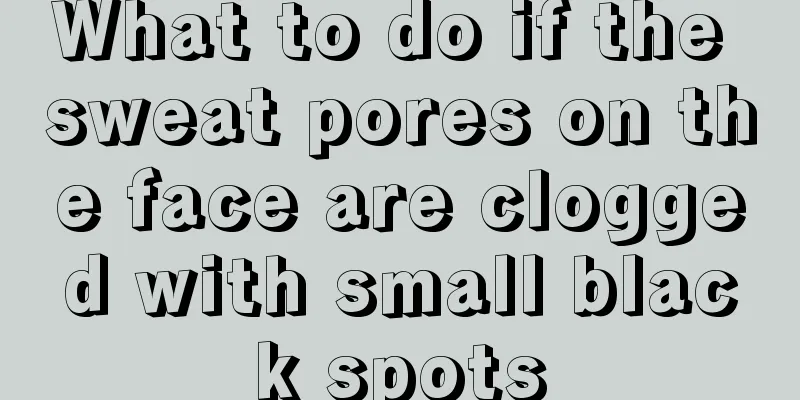Should I look up or raise my hands when I have a nosebleed

|
Core Tip: Nosebleed is a common occurrence in people's lives, and many people can already handle it on their own. For example, some people habitually raise their heads when they have a nosebleed, while some people raise their hands based on folk experience. They believe that such methods can help stop nosebleeds. So, is this approach right or wrong? With the arrival of autumn, the hot and dry climate will make people's nasal mucosa abnormally fragile. In addition, some people, especially children, pick their noses with their hands, which can easily damage the nasal mucosa and cause nosebleeds. In fact, nosebleed has become a common symptom in people's daily life, so everyone is used to it and is familiar with how to deal with it. When I was young, my mother told me that when I have a nosebleed, raising my head and hands can help stop the bleeding. I tried it several times, but the effect was not obvious. Well, today, the public health website is going to discuss whether tilting your head back and raising your hands when you have a nosebleed can stop the nosebleed? Nosebleed is a common occurrence in people's lives, and many people can already handle it on their own. For example, some people habitually raise their heads when they have a nosebleed, while some people raise their hands based on folk experience. They believe that such methods can help stop nosebleeds. So, is this approach right or wrong? ■ Hemostasis of damaged nasal blood vessels depends on blood vessel repair When a nosebleed occurs, it is because the abundant blood vessels in the human nasal cavity are damaged and bleeding. At this time, the human body will automatically start the damaged blood vessel repair function, activate the coagulation system to allow platelets to block the gap, and constrict blood vessels to reduce blood loss in the human body. In other words, any method that can block the blood circulation pathway or cause blood vessels to constrict can have the effect of stopping bleeding. Normally, the external measures we can take include: local compression, ice packs and other measures can significantly promote vasoconstriction and local blood coagulation, thereby reducing blood loss and accelerating the physiological hemostasis process. Therefore, when the nose bleeds, most people can just plug the nose with toilet paper, apply cold water to the forehead, (Neck) can help stop bleeding. If uncontrollable nose bleeding occurs, the doctor may also take measures such as local cauterization, gauze packing, vasoconstrictor nasal drops, or even vascular ligation to control the bleeding. ■Tilting your head back up can easily cause blood to flow back into the trachea, and raising your hands will not stop bleeding The treatment for nose bleeding caused by dryness is relatively simple. A common custom in many places is to tilt your head back when you have a nosebleed. In fact, this method is not only not conducive to stopping nosebleeds, but also causes nosebleeds to flow back into the throat, esophagus, trachea and stomach, causing discomfort and nausea; patients with excessive nosebleeds will vomit out the swallowed blood; constantly bending over and raising the head will increase nasal bleeding. Some people also suggest that in order to control nosebleeds, one must raise the opposite hand, believing that raising the opposite hand will cause the body's nerves to become excited and thus help constrict blood vessels. This statement seems to make sense, but if you look closely you will find that raising your hands has little effect on stopping nosebleeds. First of all, the contraction of the mucosal blood vessels in the human nasal cavity is controlled by the sympathetic nerves, which belong to the visceral nervous system and are not controlled by human will. The movements of the upper limbs are controlled by the brachial plexus nerves, which belong to the spinal nerves and are affected by human will. Therefore, this simple hand-raising exercise cannot cause changes in the human body's sympathetic nerves, nor does it have the function of causing human blood vessels to constrict. ■ The most reliable way to deal with nosebleed is to lower your head slightly In fact, when people have a nosebleed, the correct thing to do is to lower your head slightly to let the blood flow out of your nostrils, then pinch the bleeding part of your nose with your thumb and index finger for 5 minutes, with the force being enough to stop the bleeding. If you feel that the nosebleed has basically stopped after 5 minutes, you can gently block the nasal cavity with a soft cotton ball to prevent further bleeding. "Applying ice cubes also has a certain effect. It can cause blood vessels to contract by lowering the local temperature, thus achieving the effect of stopping bleeding. If it is autumn, those who are prone to nosebleeds should take preventive measures. In normal times, eat less irritating foods and more fruits and vegetables. If conditions permit, you can also choose to apply some drops into the nasal cavity to lubricate the nasal mucosa and prevent nosebleeds caused by dry mucosa. |
<<: Six words to ensure longevity
>>: The difference between sweet potatoes and yams
Recommend
What causes endometrial cancer?
We all know that endometrial cancer is a particul...
How to change the situation if my baby always sleeps with the nipple in his mouth?
In order to coax their babies to sleep at night, ...
I lost weight after I stopped exercising
Some people will exercise every day and insist on...
My legs feel numb when I sleep on my stomach
Due to the short lunch break, many office workers...
Itch in the ears, chin and pubic meridians
Some people will experience symptoms of facial it...
What are the targeted drugs for treating lung cancer
The commonly used molecular targeted drug for lun...
How to prevent lung cancer? Five most effective ways to prevent lung cancer
As we all know, the incidence of lung cancer is i...
Preventing colorectal cancer starts with eating habits
The fundamental purpose of preventing colorectal ...
Symptoms still exist after non-gonorrhea is cured
Most people are very afraid of gonorrhea because ...
Patients with laryngeal tumors must pay attention to dietary issues
The dietary problem after laryngeal tumor surgery...
What are the symptoms of rectal mucosal prolapse
Many people do not understand the symptoms of rec...
Where can I massage to nourish the kidneys
The kidneys are the foundation of our body. Nowad...
How long does it take to get a dental implant?
Dental implants are a very good way to repair mis...
Why does cervical cancer cause black blood?
Cervical cancer is very common in our gynecologic...
How to treat renal abscess
Kidney abscess is a purulent infection that mainl...









